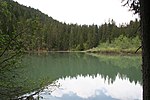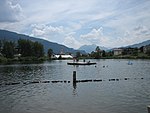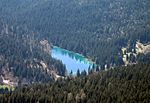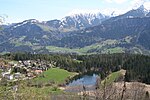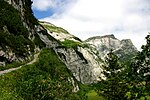Flims
Cultural property of national significance in GraubündenFlimsGlarus thrustMunicipalities of GraubündenSki areas and resorts in Switzerland ... and 1 more
Tourist attractions in Switzerland

Flims (Romansh: Flem) is a municipality in the Imboden Region in the Swiss canton of Graubünden. The town of Flims is dominated by the Flimserstein which one can see from almost anywhere in the area. Flims consists of the village of Flims (called Flims Dorf) and the hamlets of Fidaz and Scheia as well as Flims-Waldhaus, the initial birthplace of tourism in Flims, where most of the hotels were built before and after around 1900.
Excerpt from the Wikipedia article Flims (License: CC BY-SA 3.0, Authors, Images).Flims
Via Davos Sulten,
Geographical coordinates (GPS) Address Nearby Places Show on map
Geographical coordinates (GPS)
| Latitude | Longitude |
|---|---|
| N 46.833333333333 ° | E 9.2833333333333 ° |
Address
Via Davos Sulten 2
7017 , Flims Dorf
Grisons, Switzerland
Open on Google Maps

